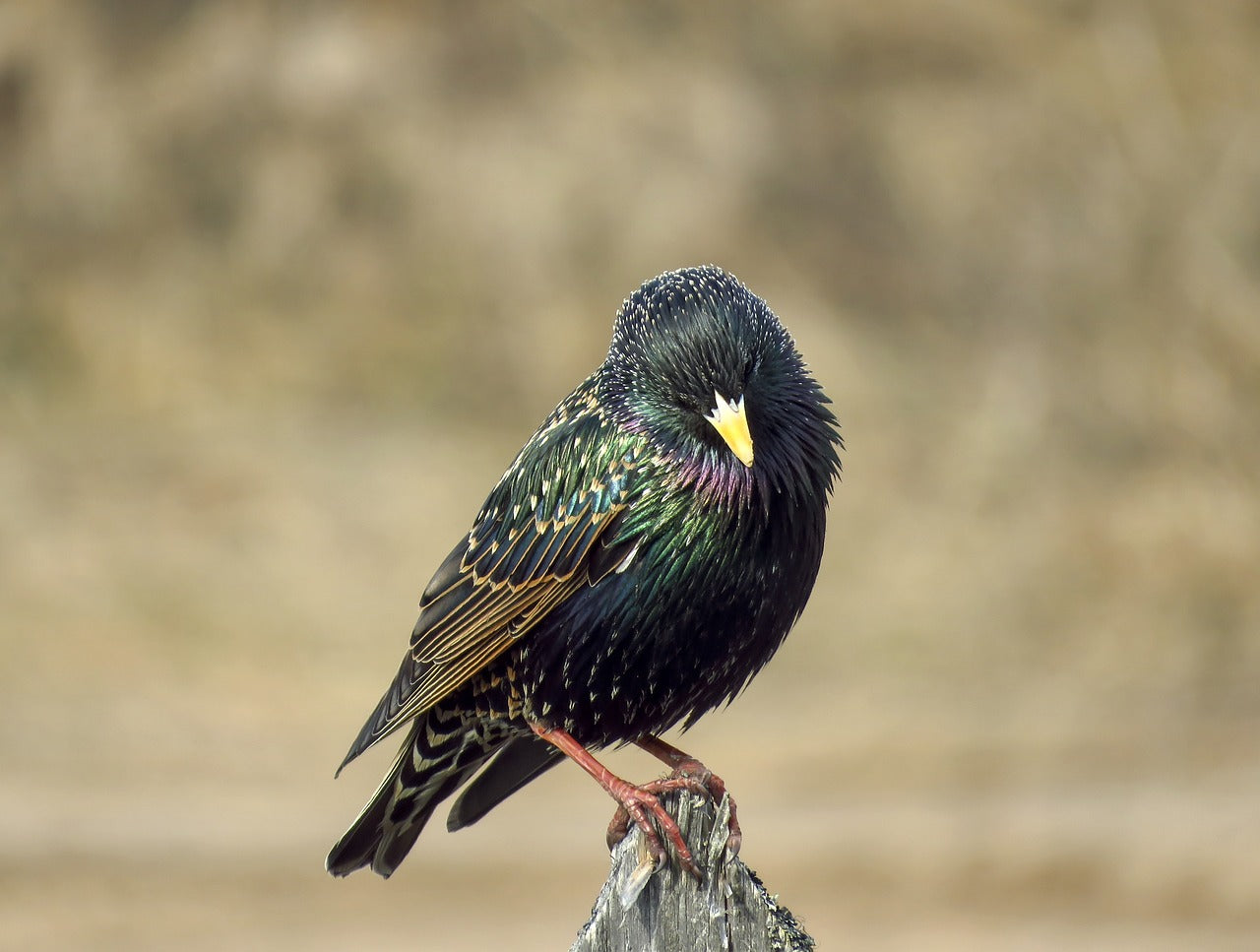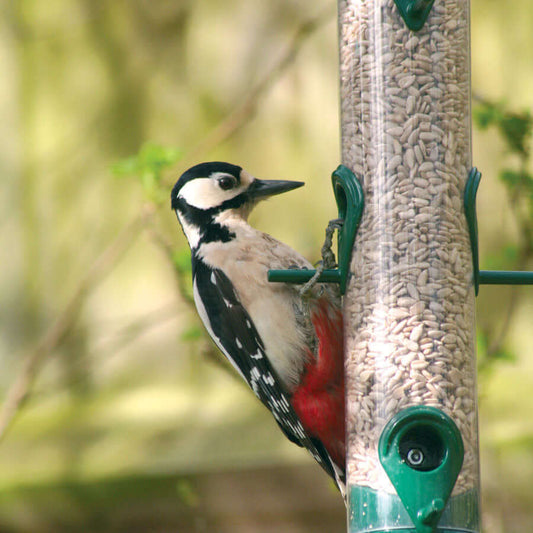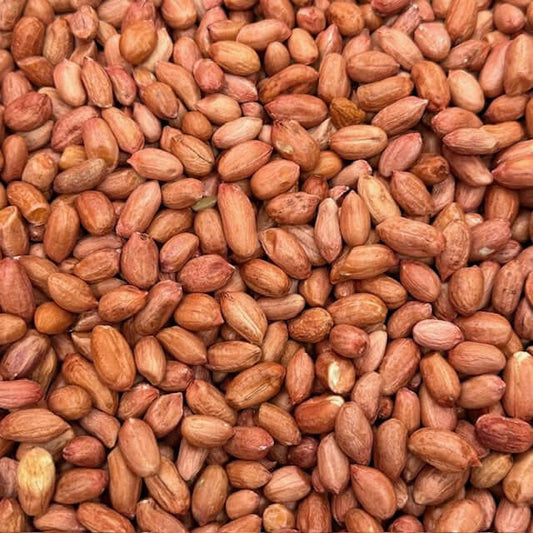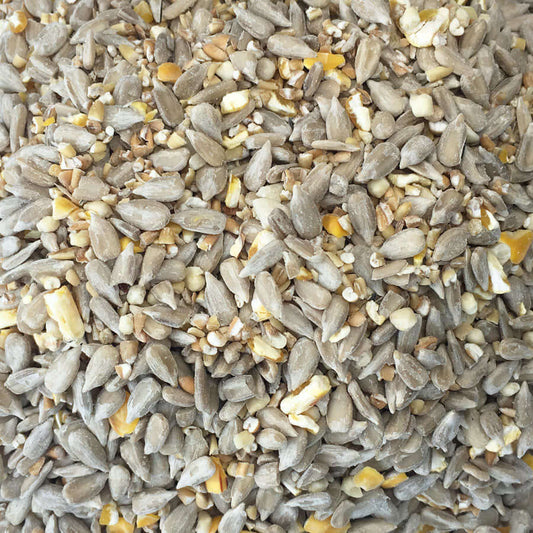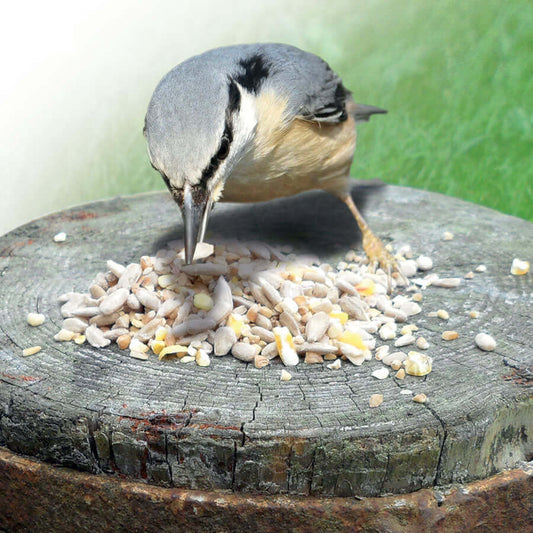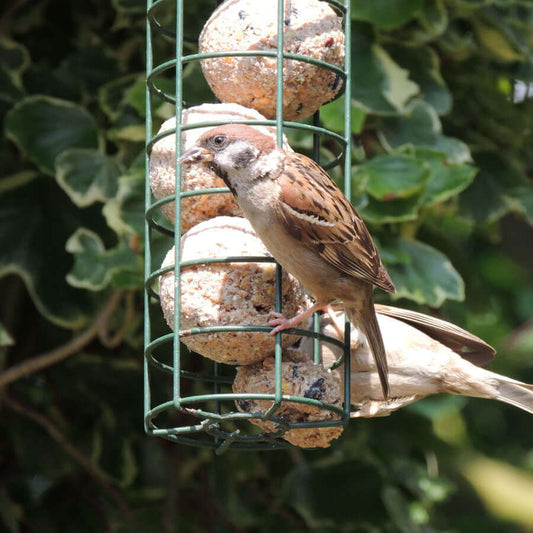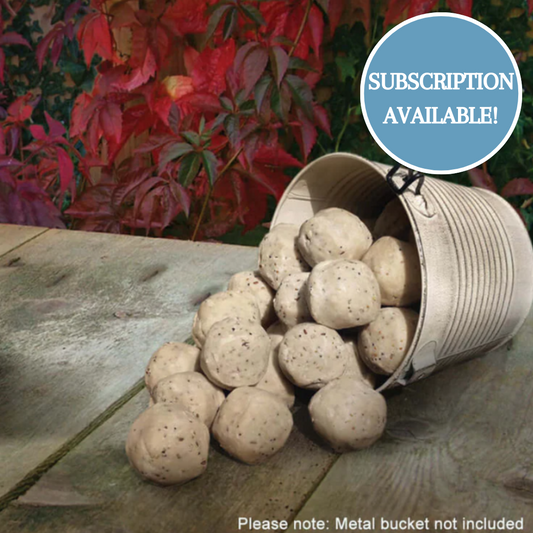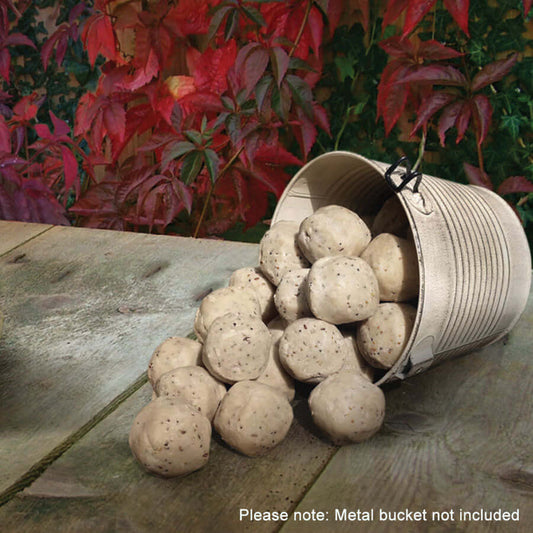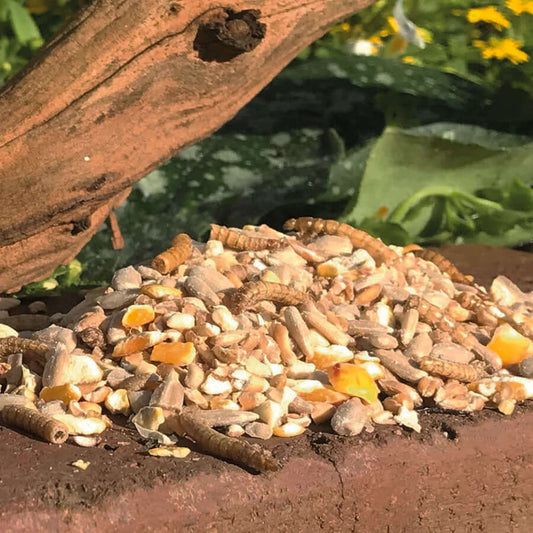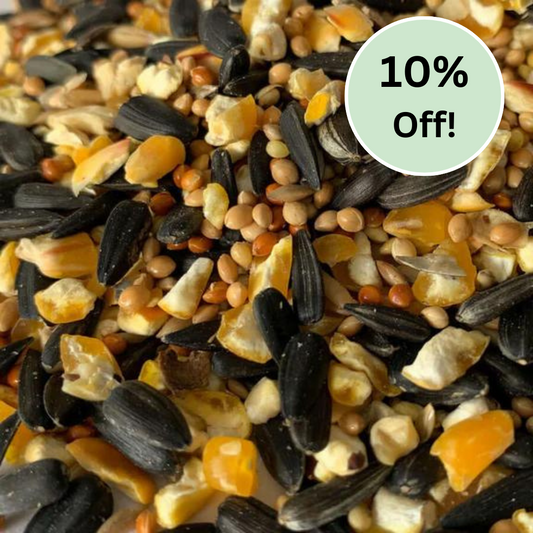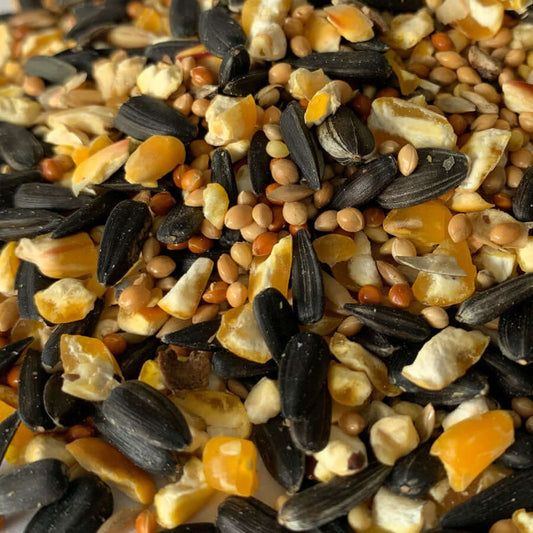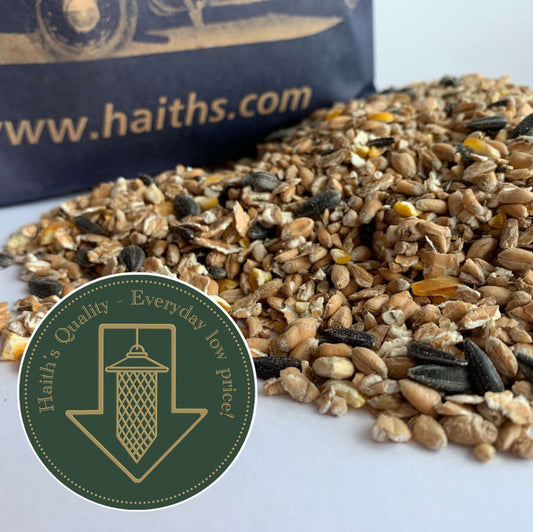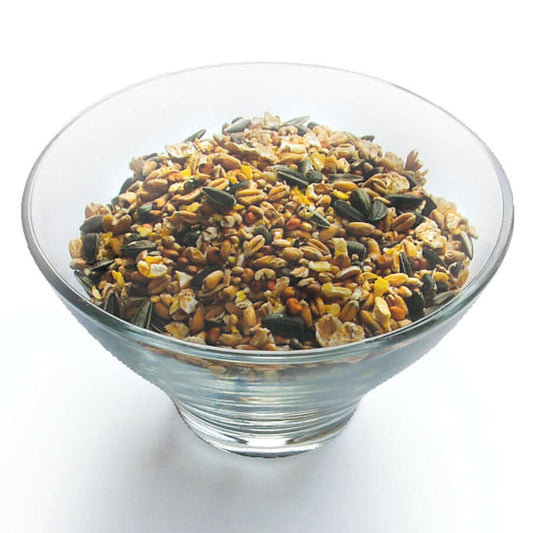Most Common Garden Birds of the UK.
Top 10 Wild Birds & The Ideal Haith's Bird Food.
Half a million garden birders participated in this year’s annual RSPB Big Garden Birdwatch survey.
The results are in, but they only tell half the story...
We were looking forward to seeing the survey results as the mild winter has presented new feeding opportunities to wild birds on bird feeders. The survey results come with a bit of a health
warning however, as, at a glance, they disguise the true fluctuations in bird species populations.
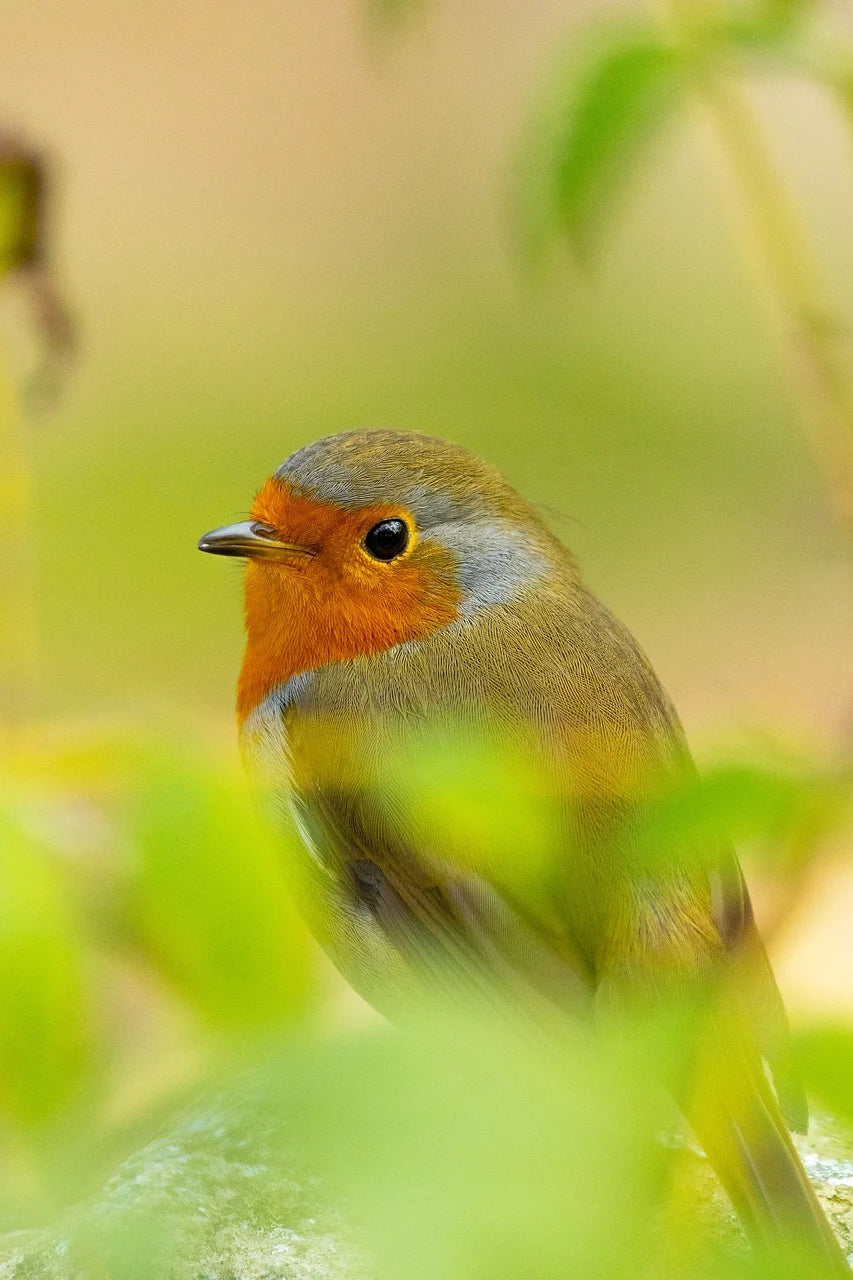
Whilst Blue Tits, Goldfinches & Great Spotted Woodpeckers appear to be thriving in British gardens, the Robin continues its sad decline on the top 10 most common garden bird list, and is now in tenth position. The falling population of Robins is a subject that’s infrequently discussed - perhaps partly down to the fact that we focus on them being territorial and therefore only expect to see one or two (at best) in our gardens. The RSPB survey reminds us, though, that Robin populations have fallen by over 45% since 1979 (Source: RSPB).
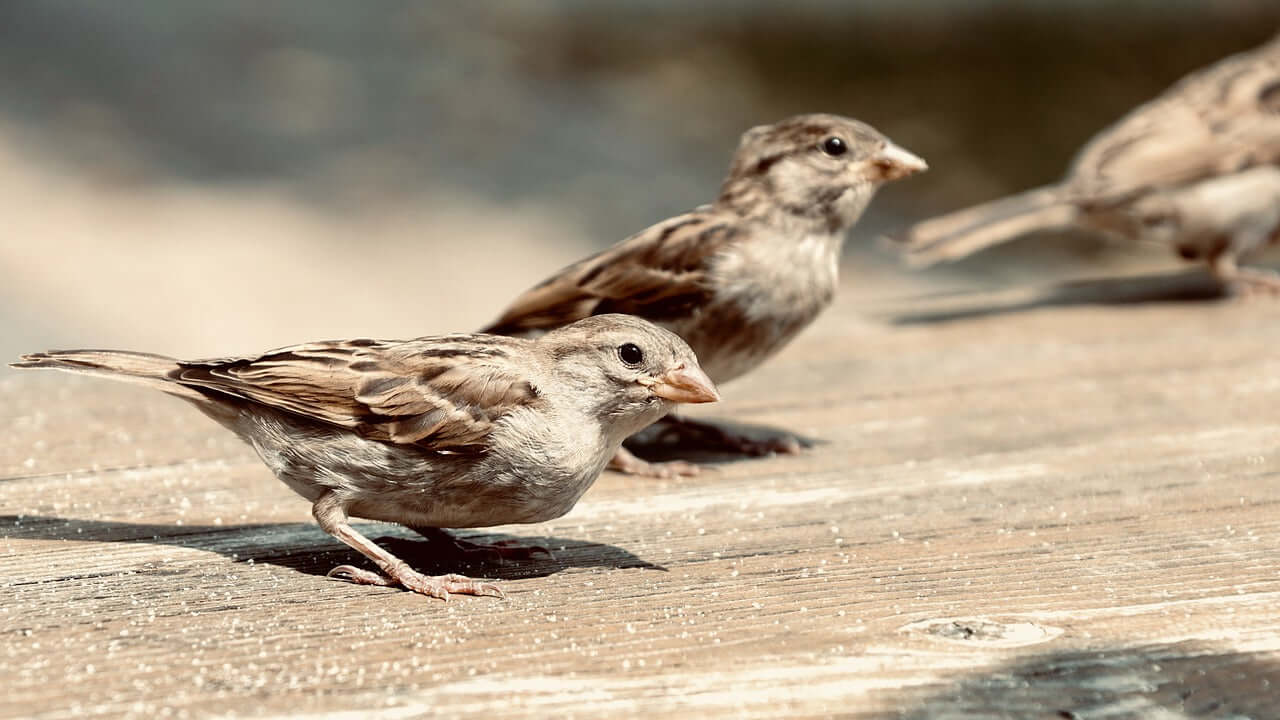
The House Sparrow is now our most common garden bird; however, once again, its population has declined by over 62% since 1979. We therefore need to read the RSPB Big Garden Birdwatch survey thinking about the bigger picture - which is that birds still need our help!
However common they might (on the face of it) appear.
Our concern (as a bird-feeding community) is for all garden birds and the best way we (Haith’s) can support nature conservation. We realised that this is best achieved by providing the cleanest, safest
high-quality bird food we can – direct from The Bird Food Centre in Lincolnshire.
We’re pleased that there appears to have been a deluge of more “natural” food available for wild birds due to the mild winter weather and we hope that means more birds will make it through to the breeding season! Time will tell, though, as sudden frosts may still present a challenge to garden birds as the mild temperatures may have triggered off earlier than usual breeding behaviour. Whatever the weather we can make life easier by providing high-quality, clean and nutritious foods.
Here are the top ten common birds. We’ve added a small piece about each and you can read more and find out what they eat by clicking on the link.

10. Robin
The Robin is a common favourite with most people and one of the easiest to recognise. It has a bright red breast, face, throat and cheeks edged with grey, has a white belly and brown upper parts. To attract robins to your garden, Golden Chorus and Prosecto Insectivorous are great mixes to try.

9. Collared Dove
Easily identified by its fawn colouration with brown flight feathers, it has a narrow black collar around the nape which is absent in juvenile birds. The Collared Dove has only been breeding in Britain since 1955 where it had spread its range from the Balkans. These smart-looking garden birds enjoy indulging themselves in our Premium Wild Bird Food and Original Wild Bird Food.
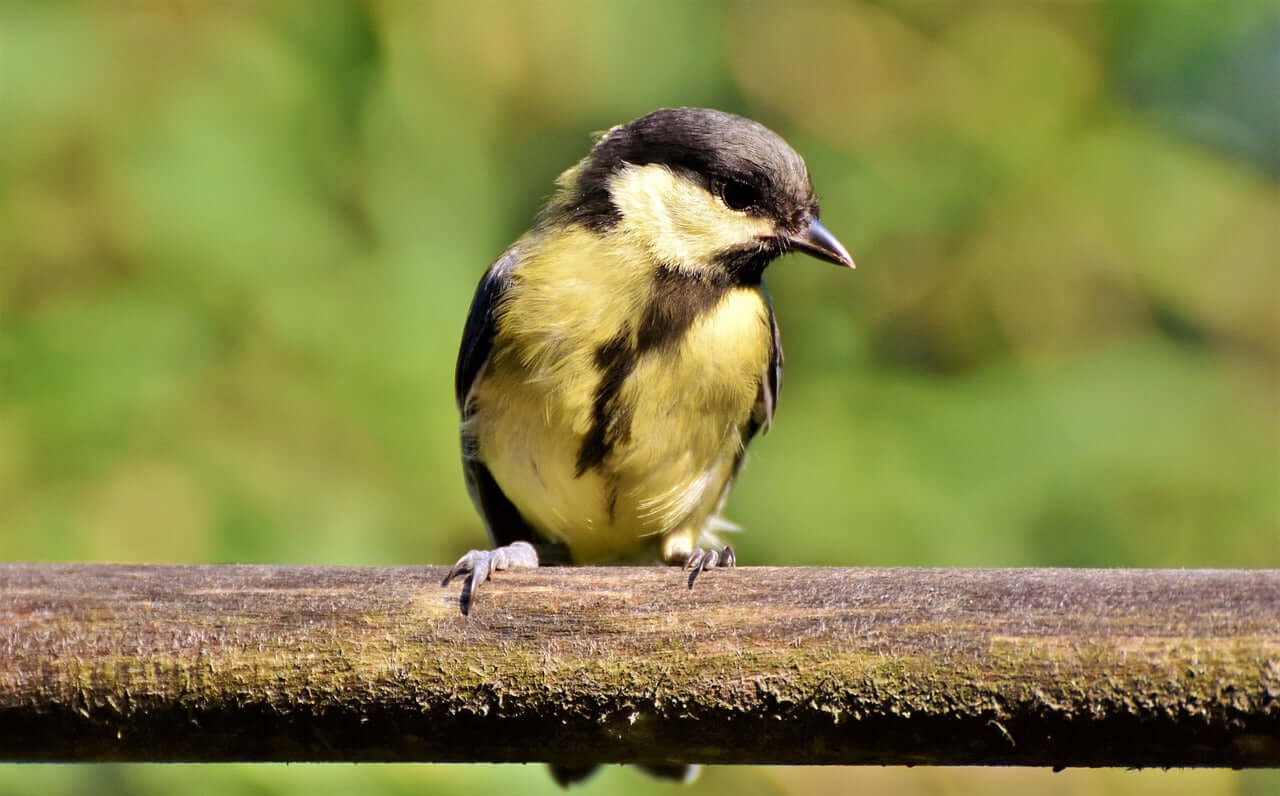
8. Great Tit
The range of the Great Tit extends from Britain in the west through Europe and Asia as far as Java and the Lesser Sundas in Indonesia. The British race is recognised by its glossy black crown and pure white cheeks with a black band
down the centre of its yellow under parts. These sweet little birds enjoy Premium Peanuts and Black Sunflower.
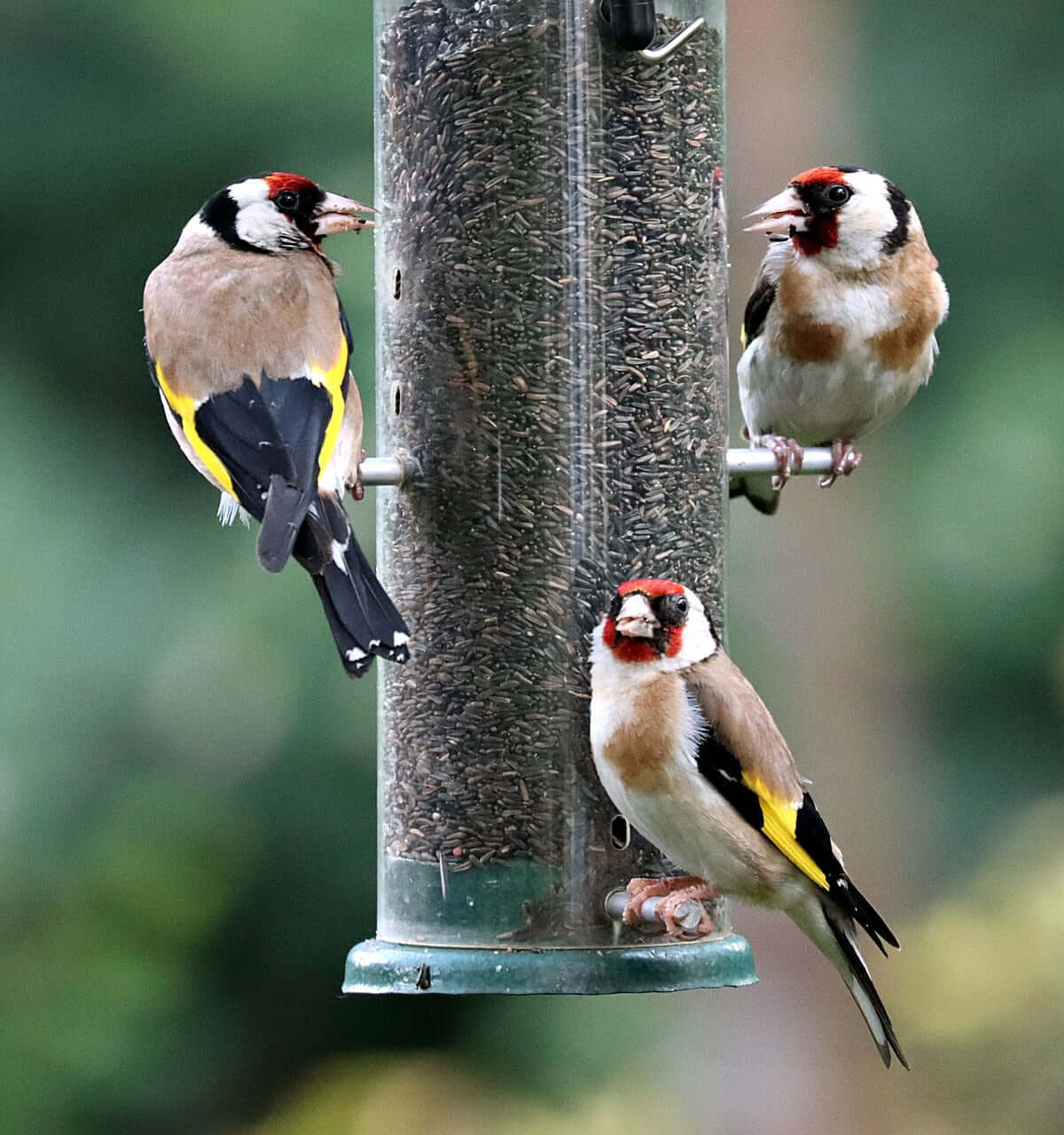
7. Goldfinch
The Goldfinch is recognised for its bright red face, which contrasts strongly with the black and white head and yellow wing bars. Its mantle and flanks are a pale russet brown and its whitish underparts. The flight feathers and tail are black, tipped with white. Goldfinches love niger seed! If you want to attract these flashes of gold to your garden, try our Goldfinch & Siskin Mix.
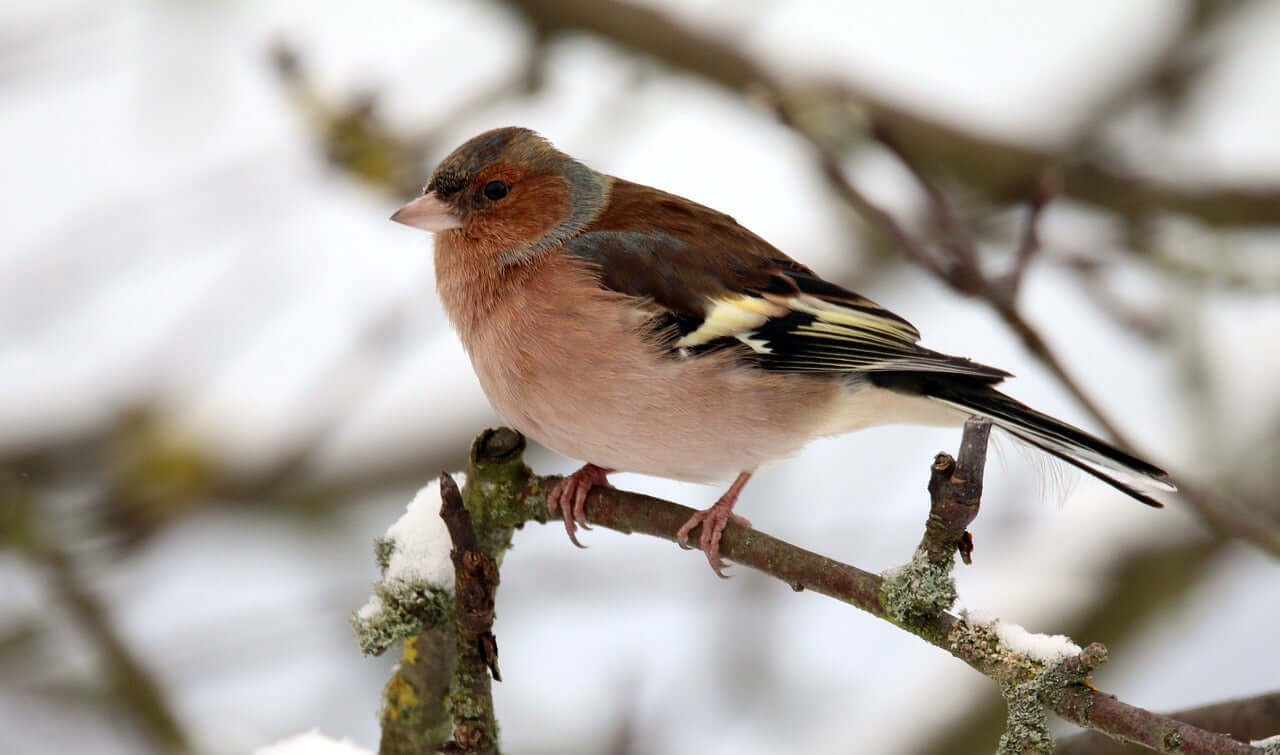
6. Chaffinch
Chaffinches nest in coniferous and deciduous woodland as well as hedgerows, parks and gardens. The male is brightly coloured especially as the breeding season approaches. He has a grey crown and nape contrasting with a chestnut-coloured face and pink breast and the tail is black with white outer feathers. The female is much duller and lacks the grey on the head. Both sexes have significant white wing patches, which are diagnostic of the species. They enjoy black sunflower and sunflower hearts.

5. Woodpigeon
The Woodpigeon is the most widespread of Britain's pigeons and is considered a pest by many farmers for the damage it creates to agricultural crops. It will even mix with Feral Pigeons right into city centres exploiting almost anything offered in the form of seed or food scraps. These large birds enjoy feasting on Original Wild Bird Seed and Garden Pheasant Mix.

4. Blackbirds
Blackbirds feed mainly on insects and earthworms during the summer months and fruit and berries during the winter. The female blackbird is dark in colour and has lighter streaks on the breast and throat compared to the dark male blackbird. These songsters also enjoy Golden Chorus and Huskfree Advance with Dried Mealworms.

3. Starling
Starlings are omnivorous depending on a wide variety of food items taking invertebrates and seeds whenever they are available. They will also come to our bird feeders and have developed the ability to hang and exploit hanging Peanut Feeders. They seem fearless as they strut around taking our bird food scattered either on the ground or put on the bird table. They will take a wide variety of Haith's bird food mixtures especially Premium Wild Bird Food and Golden Chorus.

2. Blue Tit
This small acrobatic species is easily identified, as it is the only British bird with a blue crown. It is a common (but always welcome) garden bird coming to bird tables and hanging feeders of all descriptions. The favoured bird food for blue tits coming to garden feeding stations is undoubtedly sunflower hearts closely followed by fat balls.
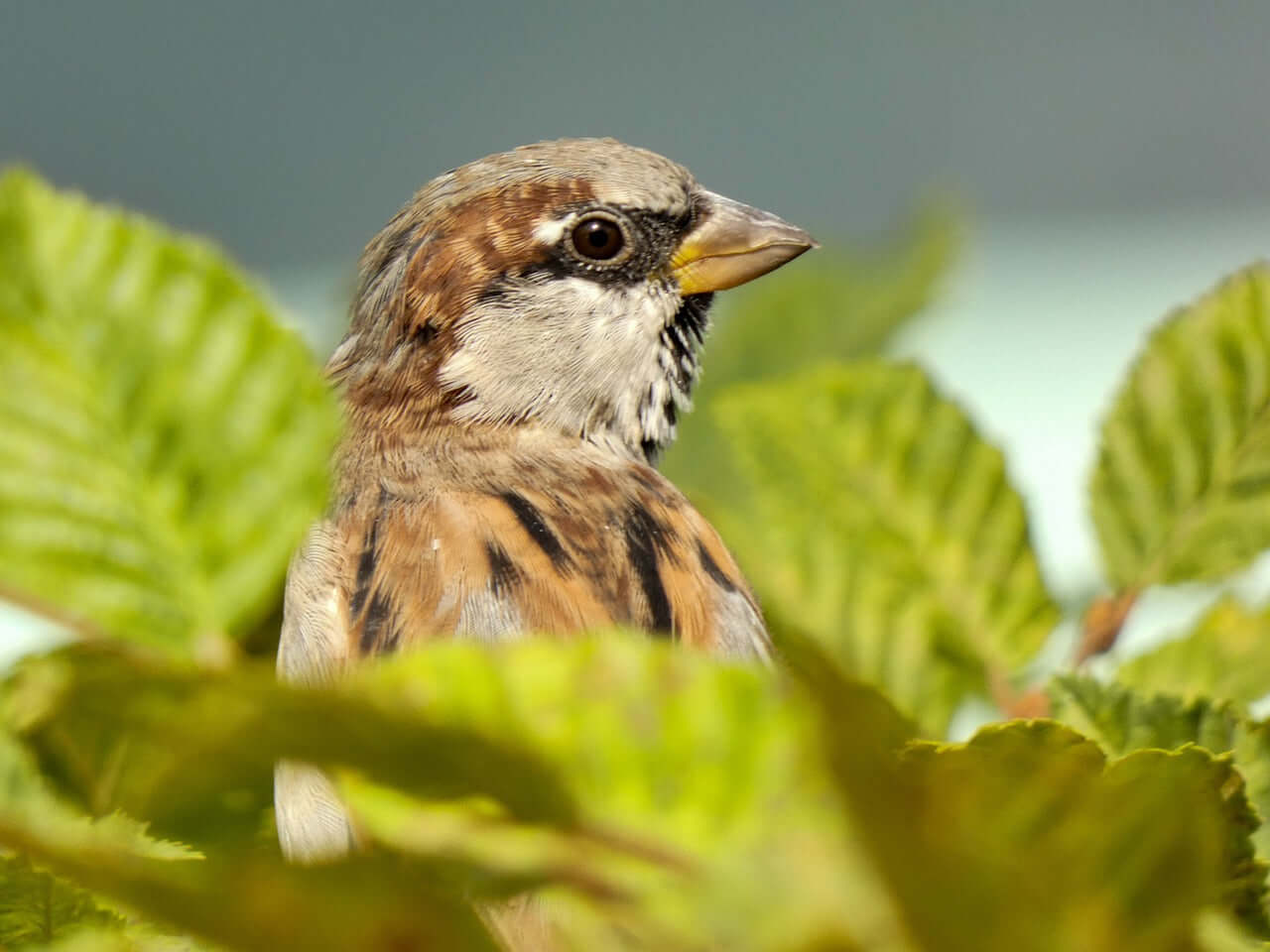
1. House Sparrow
This is another species that has declined catastrophically in the last few years and is now completely missing from areas where it was once the most common species around. Even so, they are thankfully in abundance throughout the UK, reaching the number one spot this year. They enjoy Original Wild Bird Food and Premium Wild Bird Food.
Written by Angela and Chris

